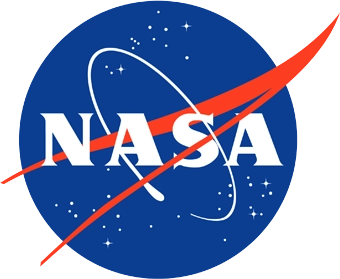Early Career Scientist Spotlight
Dr. Brent McBride (he/him)
Instrument Scientist
Biospheric Sciences Laboratory (618)
What is your research focus?
I monitor the calibration of the Moderate-resolution Imaging Spectroradiometer (MODIS) instruments on NASA’s Aqua and Terra spacecraft, as part of the MODIS Characterization Support Team (MCST). MODIS is an imaging camera that maps our world every two days. MODIS also observes the Earth from 36 different wavelengths and over one thousand viewing angles. If you’ve seen press release imagery of hurricanes, wildfires, or desert dust taken from space in the past 20 years, there’s a good chance it came from one of the MODIS cameras. A lot of our current understanding about climate change has MODIS (and other satellite) data to thank, as well.
Before scientists can use MODIS data, the detector response must be calibrated. Earth-view targets such as North African deserts, the Antarctic polar cap, and cloud-free ocean scenes in the North Atlantic and South Pacific are excellent for monitoring the performance of MODIS. The surface reflectance from these sites is well-modeled. These sites don’t change much spatially or spectrally over time, either. Therefore, any new trend that we see in MODIS data when looking at these targets is likely a change to the instrument. We ensure the scientific accuracy of MODIS data over the mission by adjusting its calibration relative to these trends. We also use input from on-board sources, as well as solar and lunar data. One of my favorite parts of the job is developing new calibration techniques using multi-angle and/or polarized observations, radiative transfer models, or deep learning.
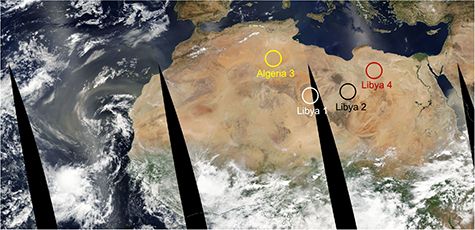
Credit: NASA Worldview (edited with circles/labels)
Did you always know that you wanted to be an Instrument Scientist?
Yes and no. I was asked in the 5th grade (11 years old) what I would like to be in 20 years for the school yearbook. I wanted to be an astronomer or weather forecaster. I loved watching the storms roll in from our kitchen window and hearing the calming pitter-pat of the hail on the roof in the sticky Maryland summer. As I got older, my interests leaned toward environmental science through politics. I interned at the Maryland State House, working with Delegate Elizabeth Bobo (D-12B), while I was in community college. She was part of the Green Caucus, a group of legislators who supported bills to give tax credits for electric car ownership, establish the Maryland Wind Energy Area off the coast of Ocean City, and address stormwater runoff across the state. Watching the legislative process play out in-person is a weirdly grounding experience. I am grateful for that opportunity. It also helped me realize that I was missing the hard science, and that visceral feeling I had looking out the window at the storms as a kid. I transitioned to physics at the University of Maryland Baltimore County (UMBC) for undergrad to stay close to family. I initially worked as a lab teaching assistant (TA) for physics professor Dr. J. Vanderlei Martins, who was working on a small satellite prototype for new cloud and pollution measurements from space. I didn’t realize it at the time, but supporting the development of an Earth-observing satellite was a poetic merge of what my 5th grade self had in mind all along.
What is one space mission that you are particularly excited about, and why?
The NASA Plankton, Aerosol, Cloud, ocean Ecosystem (PACE) mission is particularly close to my heart. Over the past seven years, I supported and demonstrated two precursors to the Hyper-Angular Rainbow Polarimeter 2 (HARP2) instrument on PACE as part of my PhD at UMBC. One was an aircraft version (AirHARP) and the other was a standalone CubeSat that flew in the orbit of the International Space Station for two years. HARP is a new wide field-of-view camera that is sensitive to polarized light, or the orientation of the electric field. If you’ve ever rotated polarized sunglasses in front of your eye while looking at the surface of a swimming pool, you might have noticed that you can remove some of that surface glare when your glasses are at certain angles. What you’re doing is varying the amount of polarized light that is entering your eye. HARP has three internal polarizing filters that are fixed at specific angles in front of its three detectors. This allows HARP to measure specific amounts of polarized light coming from an Earth scene. We use this information to study the properties of clouds, aerosols, land, and ocean in new ways. These measurements can help us better understand how our climate is evolving. It’s incredible to see the HARP program grow from a small satellite CubeSat to a major NASA satellite mission and know that I played a major role in that.
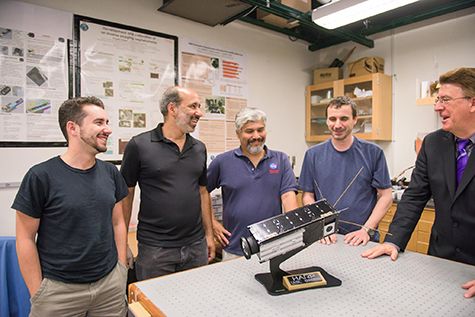
Credit: Marlayna Demond/UMBC
What science question intrigues you the most?
Measurements are a big part of my work, but what does it mean to measure something? Say you want to study light coming from the ocean. MODIS takes imagery of the ocean every orbit, but to do science on that data, you’d have to consider many other factors that are at play inside each ocean pixel. There are waves on the surface that change the way sunlight reflects and phytoplankton blooms that can change the apparent color of the water. Thin layers of lofted dust, smoke, or sulfate aerosol, and ice or water clouds in the atmosphere can modulate how much light appears to come from the ocean. Depending on the wavelength, light interacting with air or water vapor molecules can obscure the surface, too. All this could be going on in a single pixel! We try to account for all these factors if we want to study a specific Earth target. This makes remote sensing a challenging and exciting science.
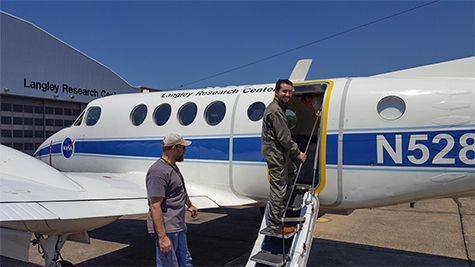
Credit: Dominik Cieslak/UMBC
What does a typical day at work look like for you?
I am grateful to have a flexible, hybrid schedule. At home, I spend the morning following the calibration results that have been produced by others in the group, catching up with the team in meetings, or working on papers/proposals. I switch gears to research and algorithm development in the afternoon. I’m also taking an online class about machine learning that is bending my brain, so I’ve been busy after hours, too. The constantly changing workflow is one of the best parts about being a scientist!
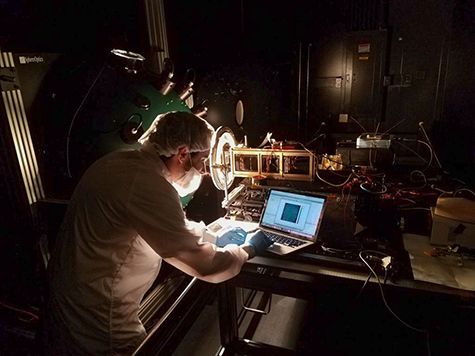
Credit: Dominik Cieslak/UMBC
What early career advice do you have for those looking to do what you do?
Embrace uncertainty! Unlike in school, most of the problems I come across in my work don’t have a “correct” answer. Remote sensors are complex, and the data that comes in might not immediately make sense or follow well-behaved functions, at times. This uncertainty can be uncomfortable. It’s also a great opportunity to leverage your intuition about what you know about the instrument, how it’s behaved before, and how it might behave in the future. Converting uncertainty into action also carries over into interviews, proposals, papers, and presentations!
I can’t stress enough how important networking is too. Go to as many relevant conferences as you can manage, even if you aren’t presenting. Cold message a scientist whose work you are interested in and ask them to share one of their papers with you (we love this!). The more your build your network, the more opportunity will come your way.
What do you like to do in your free time?
One of my favorite ways to relax is to build and play levels in Super Mario Maker 2. It is a creative sandbox game where you can share your custom Mario levels online with the world. I’ve met so many brilliant players from around the world over the past few years and consider them my extended family. I also love recreational math, playing bass guitar, traveling the world with my partner Juliana, and cooking a slew of Latin American dishes (empanadas and tostones are my go-to!).

Credit: Juliana Venegas
Biography
Home Town:
Columbia, MD
Undergraduate Degree:
BS in Physics, UMBC, Baltimore MD
Post-graduate Degrees:
PhD in Atmospheric Physics, UMBC, Baltimore MD
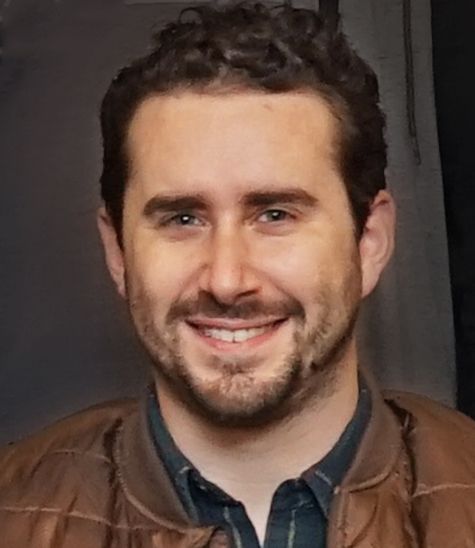
Link to Dr. McBride's GSFC Bio
